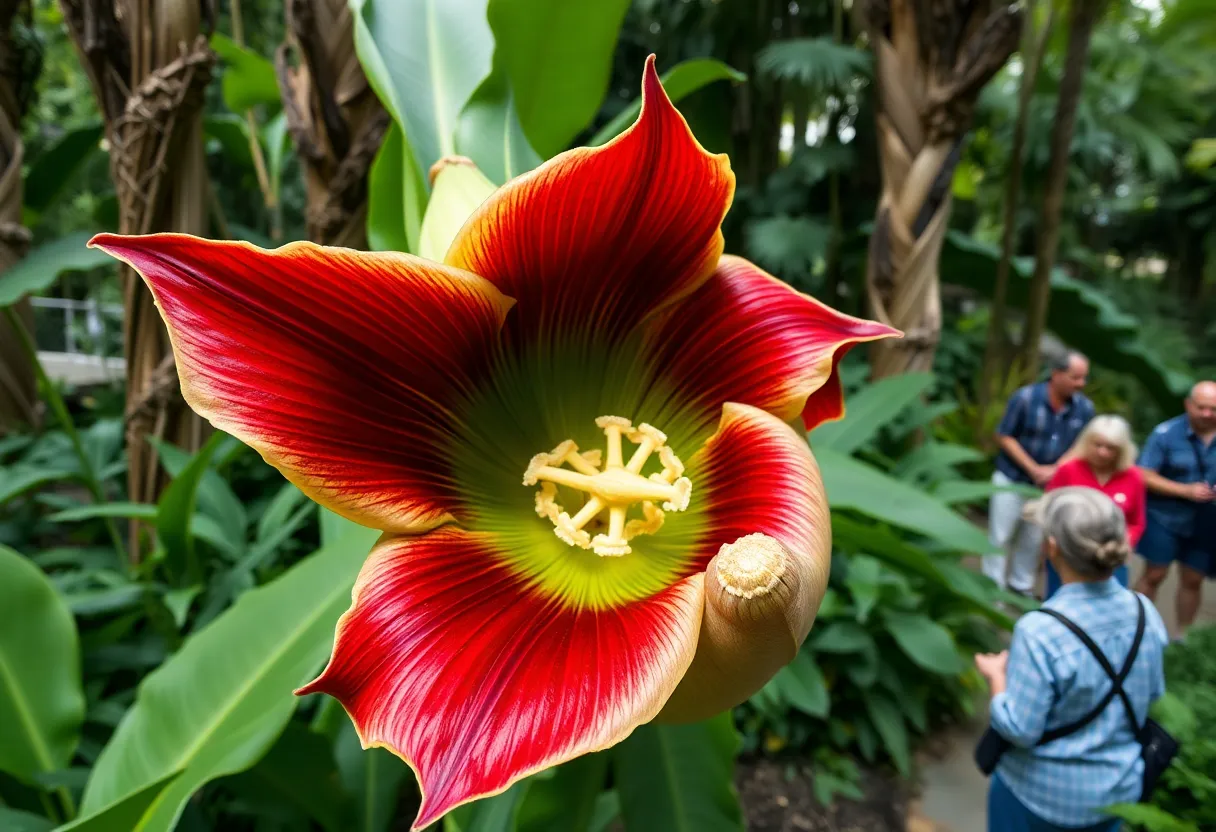News Summary
The corpse flower, affectionately named ‘Phil,’ is preparing to bloom at California State University, Long Beach. Known for its foul odor mimicking rotting flesh, this rare phenomenon draws crowds of botany enthusiasts and curious visitors. Phil has bloomed twice before, and this year’s event is garnering excitement as it shows signs of blooming within a short timeframe. The university is encouraging visitors to donate to the biological sciences department while updates about Phil’s blossoming will be shared on its official website and social media.
Long Beach, California – The corpse flower, known as “Phil,” is expected to bloom at California State University, Long Beach, as early as Saturday, June 14, 2025. This unique flowering event has generated considerable excitement due to the plant’s infamous odor, which resembles that of rotting flesh, attracting hundreds of visitors each time it blooms.
Typically, corpse flowers, scientifically referred to as Amorphophallus titanum, bloom every seven to fifteen years. However, Phil has developed a shorter blooming cycle due to careful cultivation techniques at the university’s biological sciences department. This will mark its third bloom, following its first in 2019 and a second in 2021. Notably, the flower opens only for a brief window of 24 to 48 hours, making the timing crucial for those wanting to witness this rare event.
Phil’s impending bloom is highlighted by notable signs, including the flower stalk reaching approximately 4.5 feet in height and the spathe, the large leaf-like structure surrounding the bloom, changing color from green to maroon. These physical changes indicate that Phil is preparing to bloom, providing an exciting opportunity for both botanical enthusiasts and casual observers.
The corpse flower is native to Sumatra and has a fascinating adaptation that allows it to mimic the scent of decomposing flesh. This peculiar characteristic attracts various pollinators that are drawn to the smell, enhancing the plant’s reproductive success. The inflorescence of the corpse flower is the largest within the plant kingdom, making it a remarkable sight to behold.
Phil was acquired by the biological sciences department at CSULB in 2009 and has since become a cherished part of the campus’s botanical collection. The flower was named in honor of Philip Baker, a former professor emeritus of plant systematics at the university. The excitement surrounding Phil’s blooms has led to thousands of visitors flocking to the campus during past blooming events, and substantial interest is expected for this upcoming occurrence.
While admission to see Phil is free, the university encourages visitors to consider making donations to support the biological sciences department’s ongoing work, including the maintenance and cultivation of rare plants like Phil. To keep the public informed, updates regarding Phil’s bloom will be shared on the college’s official website and social media platforms.
Community members and those interested in botany can find Phil on display in the Hall of Science once it blooms, targeting the weekend of June 14 or the week of June 16. In response to the COVID-19 pandemic restrictions during the last bloom, a live webcam was set up to allow public viewing of the flower’s development remotely. This innovative approach helped sustain interest and engagement, an example that might be repeated in future events.
Brian Thorson, the campus’s botanical curator and technician, notes the unpredictability of the flowering process, which adds to the allure of the corpse flower. With proper care, cultivated corpse flowers like Phil could potentially bloom every two to three years, making upcoming blooms even more anticipated. This year’s expected spectacle comes not just as a curiosity in the plant world but as an opportunity for education, awe, and community engagement surrounding one of nature’s most intriguing phenomena.
Deeper Dive: News & Info About This Topic
HERE Resources
Additional Resources
- Press-Telegram: Smelly Corpse Flower Named Phil Is Getting Ready to Bloom
- Spectrum News: CSU Long Beach’s Corpse Flower Rises Again
- Los Angeles Magazine: Corpse Flower Long Beach
- LA Times: Stinky Flower Bloom
- Google Search: Corpse Flower
Author: Anaheim Staff Writer
The Anaheim Staff Writer represents the experienced team at HEREAnaheim.com, your go-to source for actionable local news and information in Anaheim, Orange County, and beyond. Specializing in "news you can use," we cover essential topics like product reviews for personal and business needs, local business directories, politics, real estate trends, neighborhood insights, and state news affecting the area—with deep expertise drawn from years of dedicated reporting and strong community input, including local press releases and business updates. We deliver top reporting on high-value events such as major conventions at the Anaheim Convention Center, including NAMM and VidCon, exciting games at Angel Stadium and Honda Center, and developments at Disneyland Resort Our coverage extends to key organizations like the Anaheim Chamber of Commerce and Visit Anaheim, plus leading businesses in hospitality, entertainment, and innovation that power the local economy As part of the broader HERE network, including HERECostaMesa.com, HEREHuntingtonBeach.com, HERESantaAna.com, and HERELosAngeles.com, we provide comprehensive, credible insights into Southern California's dynamic landscape.




